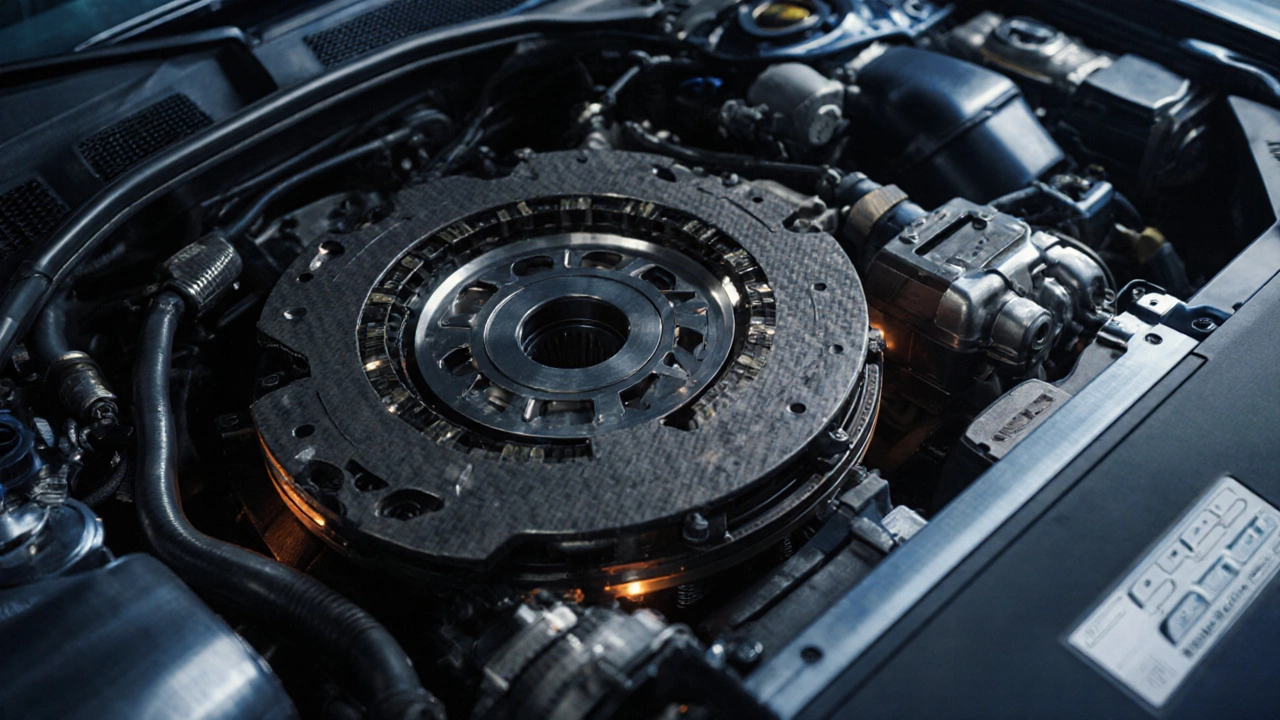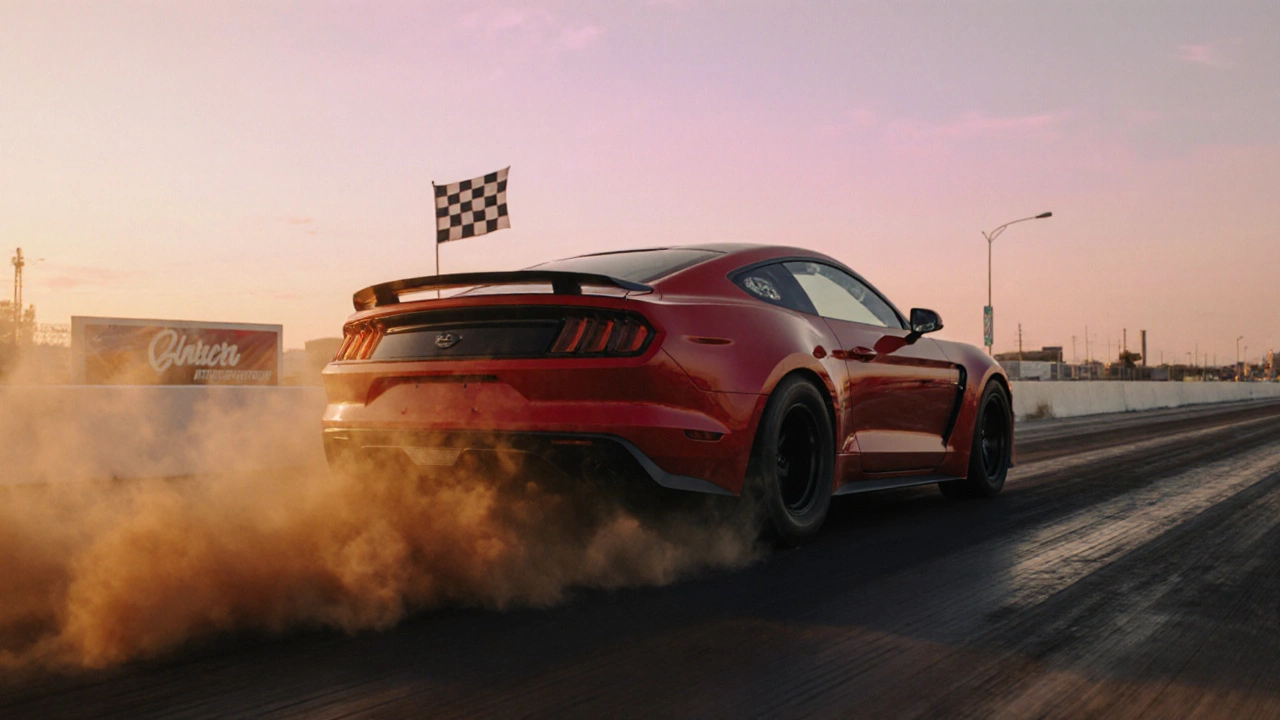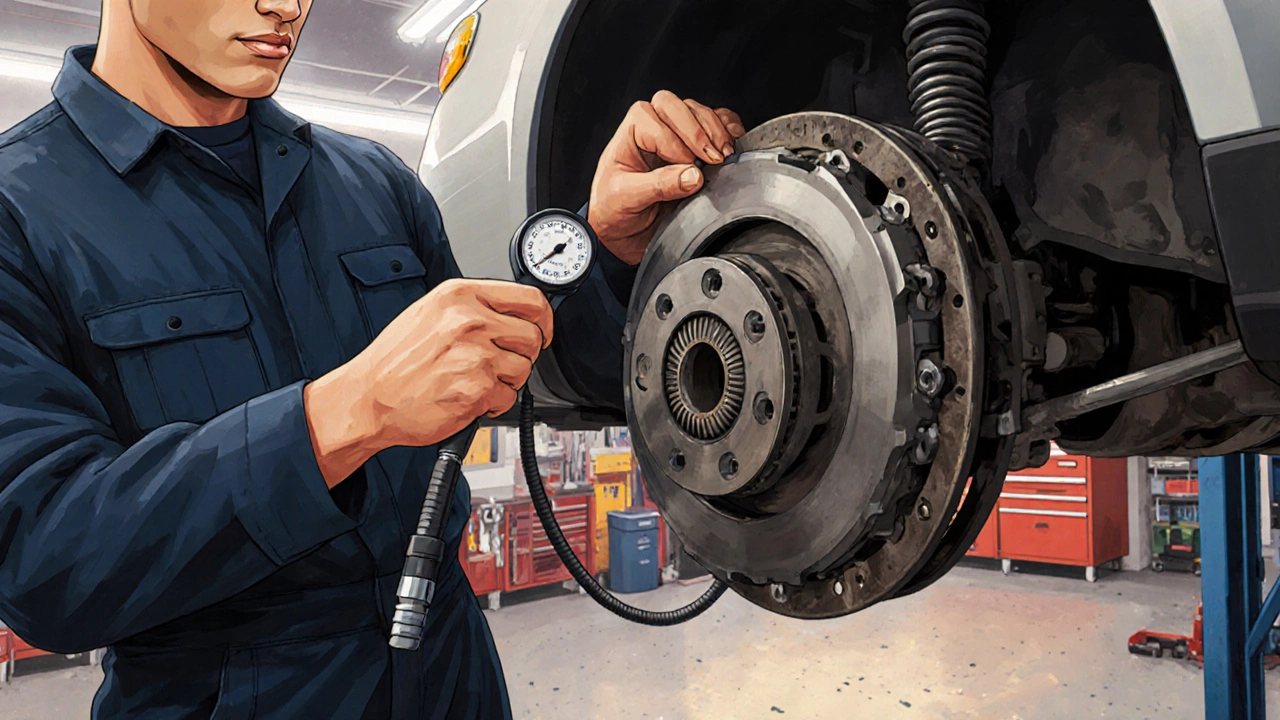 Oct, 10 2025
Oct, 10 2025
Clutch Upgrade Acceleration Calculator
Vehicle Specifications
Potential Acceleration Improvement
Performance Comparison Table
| Setup | Clutch Type | 0-60 Time (s) | Quarter-Mile Time (s) | Weight Reduction (lb) |
|---|---|---|---|---|
| Base | Stock Organic | 7.2 | 14.8 | 0 |
| Upgrade 1 | Ceramic Performance | 6.9 | 14.3 | 12 |
| Upgrade 2 | Ceramic + Lightweight Flywheel | 6.5 | 13.9 | 42 |
When you swap in a upgraded clutch is a high‑performance clutch assembly built to handle higher torque and reduce slippage, the promise on the box is clearer: faster starts, sharper shifts, and better overall performance. But does the hardware actually make you quicker on the road, or is it mostly marketing hype? Below we break down how a clutch works, what an upgrade changes, and where you’ll really feel the difference.
Key Takeaways
- An upgraded clutch can shave 0.1‑0.3 seconds off 0‑60 times when the rest of the drivetrain can handle the extra torque.
- Weight reduction, higher friction material, and stiffer pressure plates are the three main performance levers.
- If the engine’s horsepower or torque is unchanged, gains are modest; pair the clutch with a flywheel upgrade for noticeable results.
- Installation quality and proper break‑in are critical - a poorly installed clutch can hurt acceleration more than a stock unit.
- Use a comparison table to match stock versus performance specs before buying.
How a Clutch Influences Acceleration
At its core, a clutch connects the engine’s crankshaft to the transmission. When you press the pedal, the clutch disengages, letting you change gears without grinding. When you release, the clutch re‑engages, transmitting engine torque to the wheels. Two key variables determine how quickly that torque is delivered:
- Torque is the twisting force the engine produces, measured in foot‑pounds (ft‑lb).
- Horsepower is the rate at which work is done, influencing top‑end speed.
If the clutch slips, some of that torque is lost as heat, reducing the effective force that pushes the car forward. A clutch with higher friction material and a more rigid pressure plate locks up faster, allowing more of the engine’s torque to reach the wheels during launch.
What an Upgraded Clutch Changes
Performance clutches differ from stock units in three primary ways:
- Friction Material: Ceramic or carbon‑based compounds provide up to 30% more grip than organic stock plates.
- Pressure Plate Stiffness: A stiffer plate reduces the amount of pedal force needed to engage, shortening the clutch‑to‑road lag.
- Weight: Lighter clutches (often paired with a lightweight flywheel) lower rotating mass, allowing the engine to rev more quickly.
Each factor contributes to a quicker launch, but the magnitude depends on the vehicle’s overall power and weight. A light sports car with 300hp will notice a bigger shift than a heavy SUV with 200hp.

Pairing the Clutch with Other Upgrades
Most enthusiasts combine the clutch with a flywheel is a rotating mass that stores kinetic energy and smooths engine pulses. A lighter flywheel reduces rotational inertia, letting the engine spin up faster. When you match a high‑friction clutch with a lightweight flywheel, the engine can deliver torque more instantly, often cutting 0‑60 times by a noticeable margin.
Another common combo is launch control is an electronic aid that optimizes throttle and RPM for the quickest start. Even with a stock clutch, launch control can improve consistency, but a performance clutch makes the actual power transfer smoother, letting the system hit its target RPM without slip.
Real‑World Performance Data
Below is a snapshot from three popular builds tested on a dynamometer and on a ¼‑mile strip. All cars use the same engine, tires, and driver.
| Setup | Clutch Type | 0‑60 (s) | ¼‑Mile Time (s) | Weight Reduction (lb) |
|---|---|---|---|---|
| Base | Stock organic | 7.2 | 14.8 | 0 |
| Upgrade 1 | Ceramic performance | 6.9 | 14.3 | 12 |
| Upgrade 2 | Ceramic + lightweight flywheel | 6.5 | 13.9 | 42 |
The data shows a modest 0.3‑second gain with just a better clutch, and a solid 0.7‑second improvement when the clutch is paired with a light flywheel. Those numbers can translate to a lower quarter‑mile time and a more responsive feel on city streets.
Installation Tips and Common Pitfalls
Even the best clutch can underperform if installed poorly. Keep these points in mind:
- Torque specifications: Use a calibrated torque wrench for the pressure‑plate bolts. Over‑tightening can warp the plate, causing chatter.
- Hydraulic system check: If your car uses a hydraulic clutch, bleed the lines properly to avoid air bubbles, which create slip.
- Break‑in period: Run the clutch at moderate RPMs for the first 500 miles. This allows the friction material to seat evenly.
- Clearance adjustment: Verify the release bearing clearance; too much clearance leads to slippage, too little causes premature wear.
Skipping any of these steps can negate the performance gains and may even damage the transmission.

When an Upgraded Clutch Is Worth It
Consider a clutch upgrade if you fall into one of these scenarios:
- You regularly launch the car from a standstill (track days, drag racing, or spirited street driving).
- Your vehicle has been modified for more torque (turbo, supercharger, or engine swap).
- You’ve already upgraded the flywheel or plan to.
- You’re chasing a specific 0‑60 target for a competition class.
If you simply drive commuting distances and have no power upgrades, the stock clutch is already well‑matched to your engine, and the money spent on a performance unit may not be justified.
Choosing the Right Upgrade
Use this quick decision matrix to match your goals with the appropriate clutch type.
| Goal | Recommended Clutch | Key Feature | Typical Price (CAD) |
|---|---|---|---|
| Daily driving + mild upgrades | Heavy‑duty organic | Higher torque capacity, similar feel | 250‑350 |
| Track day / launch | Ceramic performance | 30% more friction, reduced slip | 350‑500 |
| Maximum speed + light flywheel | Carbon‑ceramic hybrid | Lightest, highest torque rating | 500‑750 |
Make sure the clutch you pick is compatible with your transmission is the gearbox that transfers torque to the wheels - many performance clutches require a specific bell‑housing or pilot bearing.
Bottom Line
A well‑chosen and properly installed upgraded clutch can indeed make you faster, but the gains are most noticeable when the rest of the drivetrain can handle the extra torque. Pairing the clutch with a lightweight flywheel, ensuring proper hydraulic setup, and breaking it in correctly are the three steps that turn a theoretical improvement into real‑world acceleration.
Frequently Asked Questions
Will a performance clutch ruin my daily drive?
Not necessarily. Most aftermarket clutches are built to last as long as stock units. The main difference is a firmer pedal feel, which some drivers find less smooth at low speeds. If you choose a heavy‑duty organic clutch, daily comfort stays close to stock while still giving you a bit more torque capacity.
How much does a clutch upgrade typically cost?
Prices range from about CAD250 for a high‑capacity organic kit up to CAD750 for a carbon‑ceramic hybrid with a lightweight flywheel. Installation labor adds another CAD200‑300 if you don’t do it yourself.
Do I need a new flywheel with every clutch upgrade?
It’s not mandatory, but a compatible flywheel maximizes the benefits. A lighter flywheel reduces rotating mass, which works hand‑in‑hand with a high‑friction clutch to improve launch speed. If you keep the stock flywheel, expect smaller gains.
Can a performance clutch handle extra horsepower from a turbo?
Yes, as long as you pick a clutch rated for the new torque level. Turbocharged engines often see torque spikes, so a ceramic or carbon‑ceramic clutch with a higher torque rating is recommended to avoid slip and premature wear.
How long does the break‑in period last?
Most manufacturers advise 300‑500 miles of moderate driving. Avoid hard launches or red‑lining the engine during this time. After the break‑in, the friction material settles and you’ll notice the full performance gain.